How to Decorate a Studio Apartment: An Expert's Guide
Wondering how to make your studio feel bigger and more functional? This expert guide answers with pro tips on layout, furniture, storage, and style.
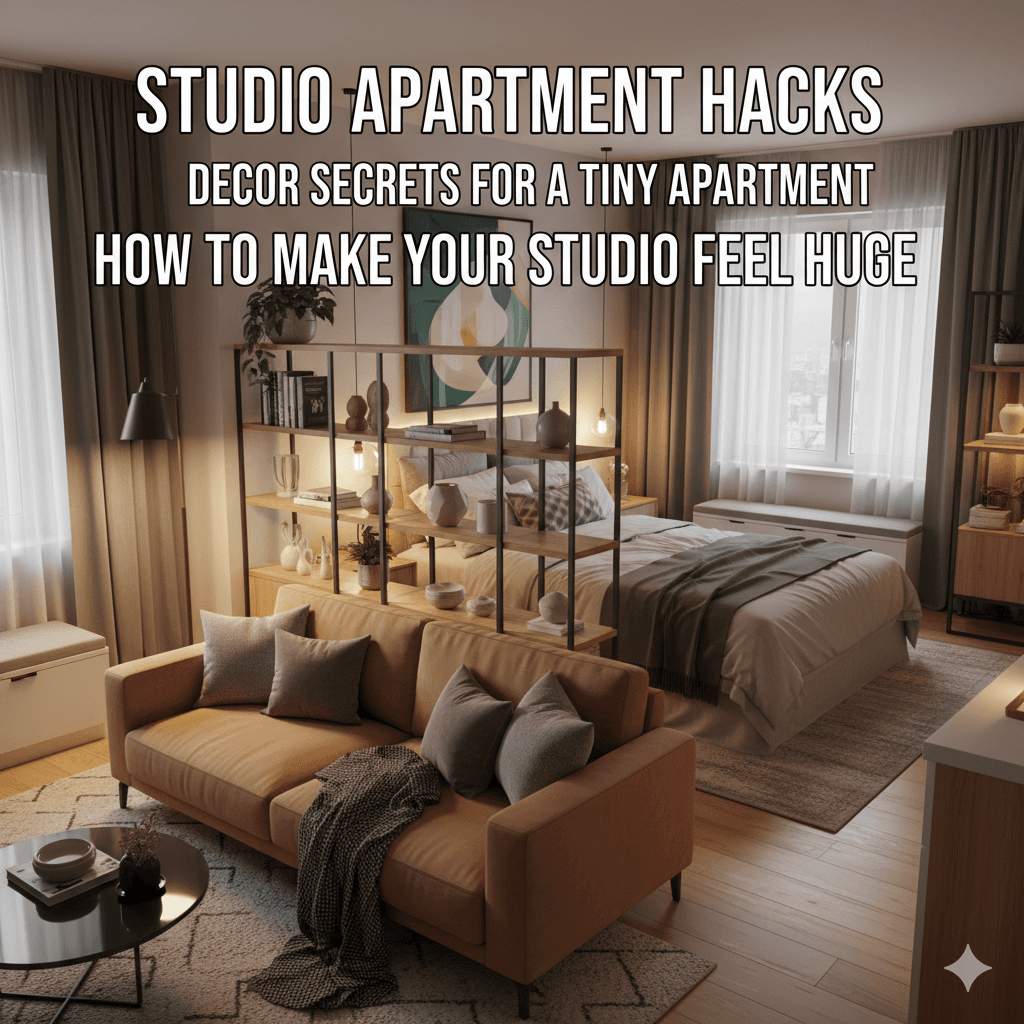
The Art of Studio Living: An Expert's Guide to Creating a Stylish & Functional Space
Welcome to Your Micro-Kingdom!
Studio apartment. For some, these two words might evoke images of limitations, tight spaces, and a "everything-in-one-place" chaos. But we're here to change that perspective. What if you saw your studio apartment not as a constraint, but as a blank canvas for your creativity? With the right strategies, this "one-room box" can be transformed into a personal sanctuary, an ultra-functional living space, and a temple that proclaims your style in every corner.
In this guide, we're taking you on a journey to make you the victor of the studio apartment wars. Together, we will explore optical illusions that magically double your space, master the art of creating rooms without walls, meet "hero" furniture that is both chic and works as hard as a superhero, and learn ingenious storage strategies to banish clutter forever.
The Illusionist's Handbook: Mastering the Art of Creating Space
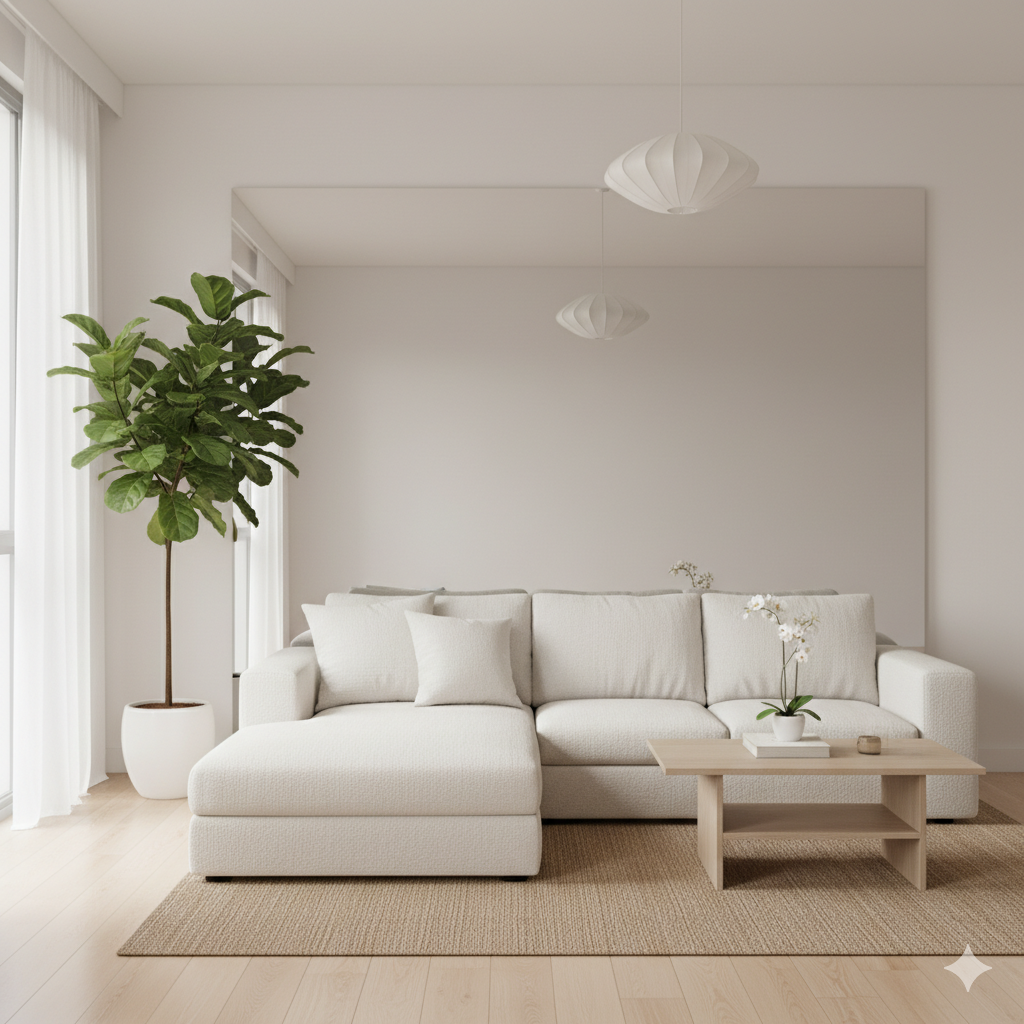
The first and most fundamental rule of decorating a studio apartment is accepting that while we can't change the physical square footage, we can completely change the perception of it. This section is like a magic show where optical illusions, plays of light, and the psychology of color are our greatest allies.
"Let There Be Light!": In the Name of Illumination Light is the most fundamental element that determines the spaciousness of a space.
-
Embrace Natural Light: See your windows as treasures. Allowing natural light to flood in is the most effective way to make a space feel instantly larger and more inviting. Avoid heavy, thick, dark-colored curtains. Instead, opt for simple, modern window coverings like light sheers, roller shades, or blinds that filter the light.
-
The Art of Layered Lighting: Relying on a single ceiling lamp is one of the biggest mistakes in small spaces. The solution is layered lighting. This means using three types of light sources together:
-
General (Ambient) Lighting: The main light source that illuminates the room overall, like a ceiling lamp.
-
Task Lighting: Focused lights that serve a specific function, like spotlights illuminating a kitchen counter or a lamp in a reading nook.
-
Accent Lighting: Decorative lights, such as wall sconces that highlight a piece of art or a plant.
-
The Superpower of Paint: Magic in Your Brush
-
The Spaciousness of Light Colors: The best-known and most successful illusion for making small spaces look bigger is using light colors. White, cream, beige, light gray, and pastel blue reflect more light, making the space feel brighter, airier, and more expansive.
-
Strategic Color Use (Zoning): You can also use colors as a space-defining tool. This technique, called "zoning" or regional coloring, is a stylish way to separate different functions without a physical divider.
My Reflection in the Mirror: The Art of Doubling Your Space Mirrors are the secret superheroes of small apartments. A strategically placed large wall mirror can nearly double the visual space. One of the most effective methods is to hang a mirror directly opposite a large window. This essentially adds a second virtual window to the room.
Divide and Conquer: Creating "Rooms" Without Walls
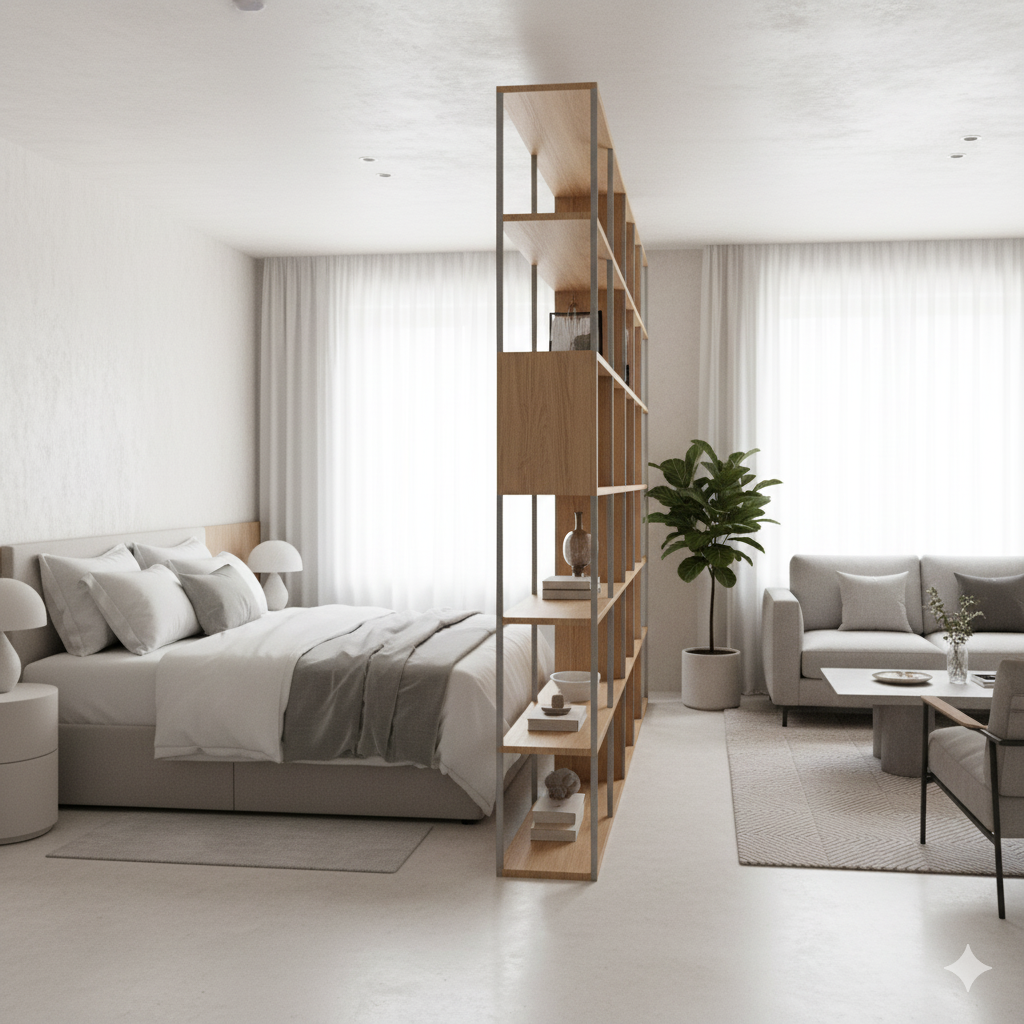
The biggest challenge of a studio is that all life functions are intertwined in one space. The goal is to draw separate and defined "psychological boundaries" for these functions without blocking light and the feeling of openness.
-
Strategic Dividers: Elegance That Defines Boundaries Instead of physical walls, one must use smart solutions that divide the space both functionally and aesthetically.
-
Flexible and Light Solutions: Room dividers (screens) and curtains are the most flexible dividers. They create privacy when needed and can be easily pulled aside or folded away.
-
Multi-Purpose Dividers: Open-backed bookshelves and shelving systems are ideal dividers for a studio. They separate areas like the bedroom from the living room while providing valuable storage space.
-
Modern and Natural Touches: For a more modern look, metal-framed glass or plexiglass panels can be used. For a softer, natural boundary, strategically placed large, leafy house plants can work wonders.
-
-
Defining Space with Furniture Placement Sometimes the best divider is the furniture itself.
-
The "Island" Principle: Create functional islands by grouping furniture. For example, a sofa, a coffee table, and a rug together are automatically perceived by our brains as a "living room."
-
Stay Away from the Walls: The most common mistake is pushing all furniture against the walls to "save space." However, this makes the space feel "breathless." Even placing furniture just a few inches away from the wall creates negative space, allowing the room to breathe.
-
Furniture Selection: The Multi-Purpose Heroes of Your Square Footage
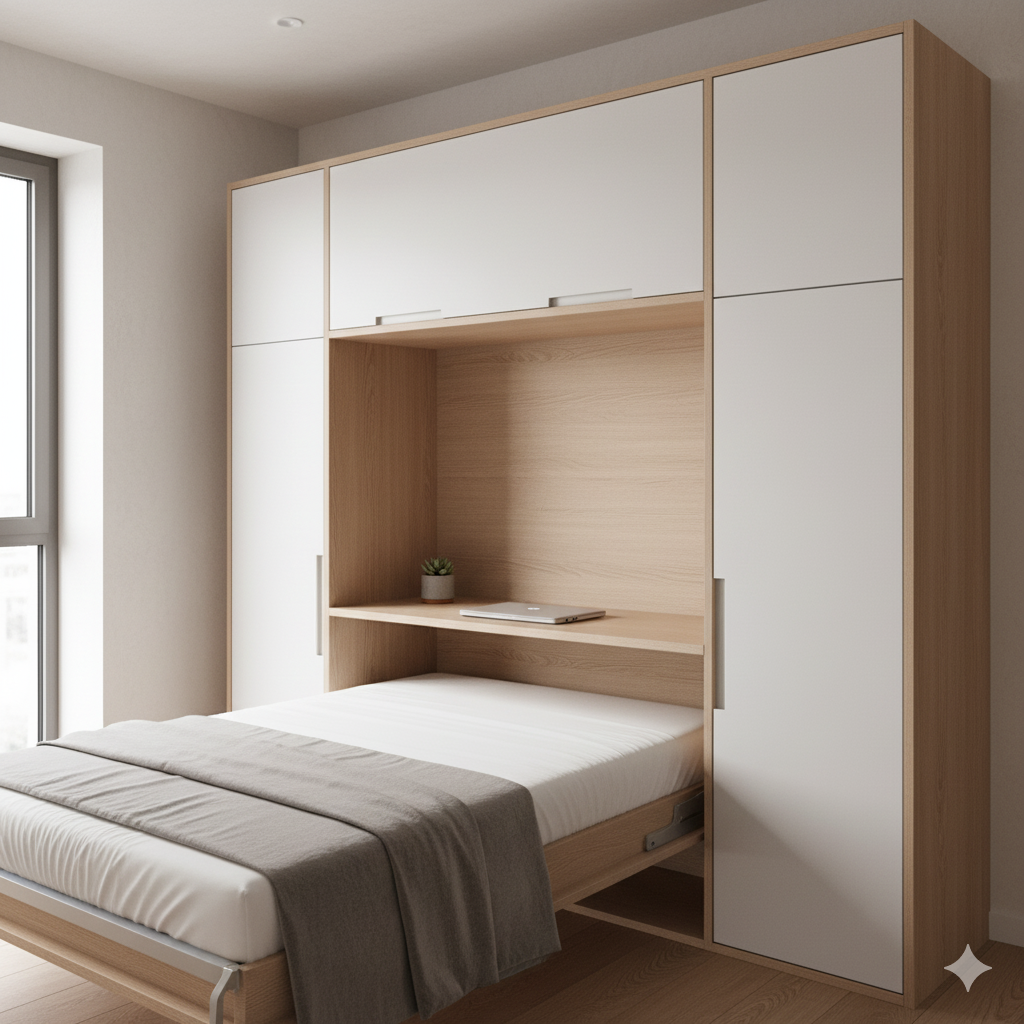
In a studio, every piece of furniture has to be a star player. It's not enough to just look good; they have to be hardworking, smart, and versatile. Our philosophy is simple: less but better, and every piece is a superhero.
-
The "Double-Duty" Doctrine: Every Piece of Furniture Should Do Two Jobs
-
Sofa Beds and Murphy Beds: Sofa beds offer a comfortable seating area by day and turn into a bedroom by night. Murphy beds (wall beds) are a more radical solution, completely removing the bed during the day to give you a huge living room or workspace.
-
Furniture with Hidden Storage: Storage beds and under-bed drawers offer a massive space to store everything from duvets to seasonal clothes. Similarly, ottomans or coffee tables with storage are perfect for instantly hiding clutter.
-
-
Scale and Elegance: "Floating" Furniture The size and style of the furniture have a dramatic effect on the spaciousness of the room.
-
The Rule of Proportion: Avoid large, bulky, massive furniture. Instead, choose smaller-scale, minimalist pieces with simple lines.
-
"Leggy" Furniture Preference: Opt for designs that stand high off the ground on thin, elegant legs. This type of furniture allows you to see the floor underneath, which helps the eye travel further into the room and makes the space feel larger.
-
The Anti-Clutter Squad: Ingenious Storage Solutions
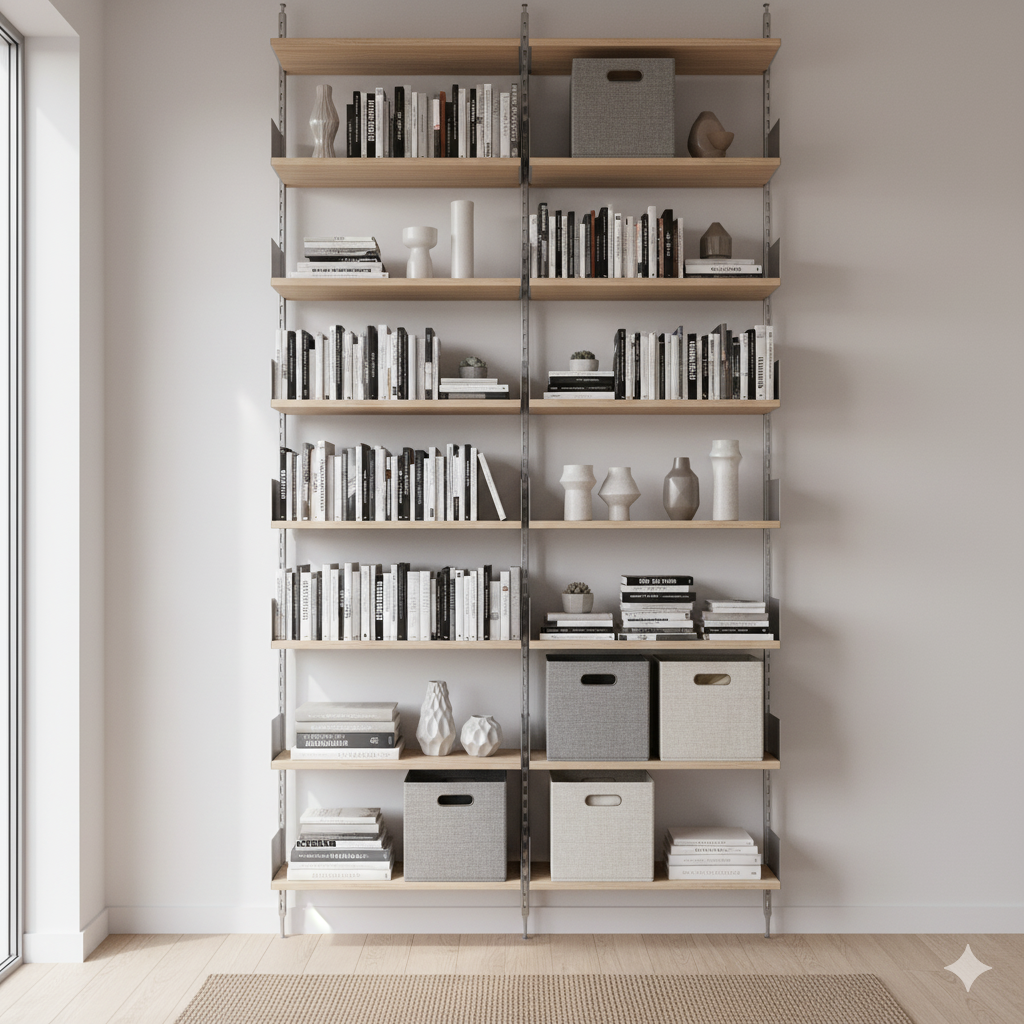
The most relentless enemy of a studio apartment is clutter. The goal is to find a home for every item without sacrificing style.
-
The Vertical Empire: The Art of Working the Walls When floor space is limited, there's only one way to go: up! Your walls are your most valuable storage real estate.
-
Floor-to-Ceiling Solutions: Tall, narrow bookshelves or shelving systems that go up to the ceiling offer incredible storage capacity and draw the eye upward.
-
Flying Shelves and Cabinets: Wall-mounted shelves and cabinets leave the floor completely free, making the room look larger and tidier.
-
-
Hidden Treasure Hunt: Reviving Dead Spaces Every home has "dead" spaces that seem useless at first glance.
-
Under and Around the Bed: The space under the bed is a classic hidden storage area.
-
Corners and Nooks: Unused corners can be brought to life with corner shelves or a small custom-designed cabinet.
-
Above and Behind Doors: Organizers hung behind doors or a simple shelf mounted in the wall space above a door can hold a surprising amount of stuff.
-
Find Your Style, Tell Your Story: Personalizing Your Studio
All these technical principles create a functional and spacious skeleton. But what makes a house a "home" is the soul you put into it. In this section, we'll explore ways to add character and personality to your studio.
-
Style Files: What's Your Studio's Personality?
-
Minimalist Sanctuary: Embraces the "less is more" philosophy. A calm, peaceful environment with clean lines and a neutral palette.
-
Bohemian Oasis: A free-spirited and eclectic style that rejects rules. It creates a comfortable and inviting atmosphere with layered textures, warm colors, and personal mementos.
-
Industrial Loft Vibe: Inspired by the aesthetic of old factories. It's a combination of raw materials like brick, metal, and unfinished wood.
-
Conclusion: Your Micro-Kingdom Awaits
As you can see, living in a studio apartment is like a chess game with square footage. With the right moves, you can checkmate even with your small pawns. This is not a limitation, but the art of living smart, creatively, and consciously.
From managing perception with illusions of light and color to choosing multi-functional furniture that works like a superhero for every square inch; from turning your walls into a storage empire by thinking vertically to infusing your space with soul by reflecting your style, your arsenal is now full.
Tags
Other Articles

3 Flawless Layouts and 5 Real-Life Studio Solutions
Wondering how to arrange furniture in your small apartment? Get 3 fail-proof layouts for narrow living rooms and 5 genius plans for studio apartments.

Studio Apartment Hack: 10 "Cloffice" & WFH Nook Ideas That Save Space
Need a home office in your studio apartment? Discover 10 clever ways to create a WFH nook, including amazing "cloffice" (closet office) hacks.
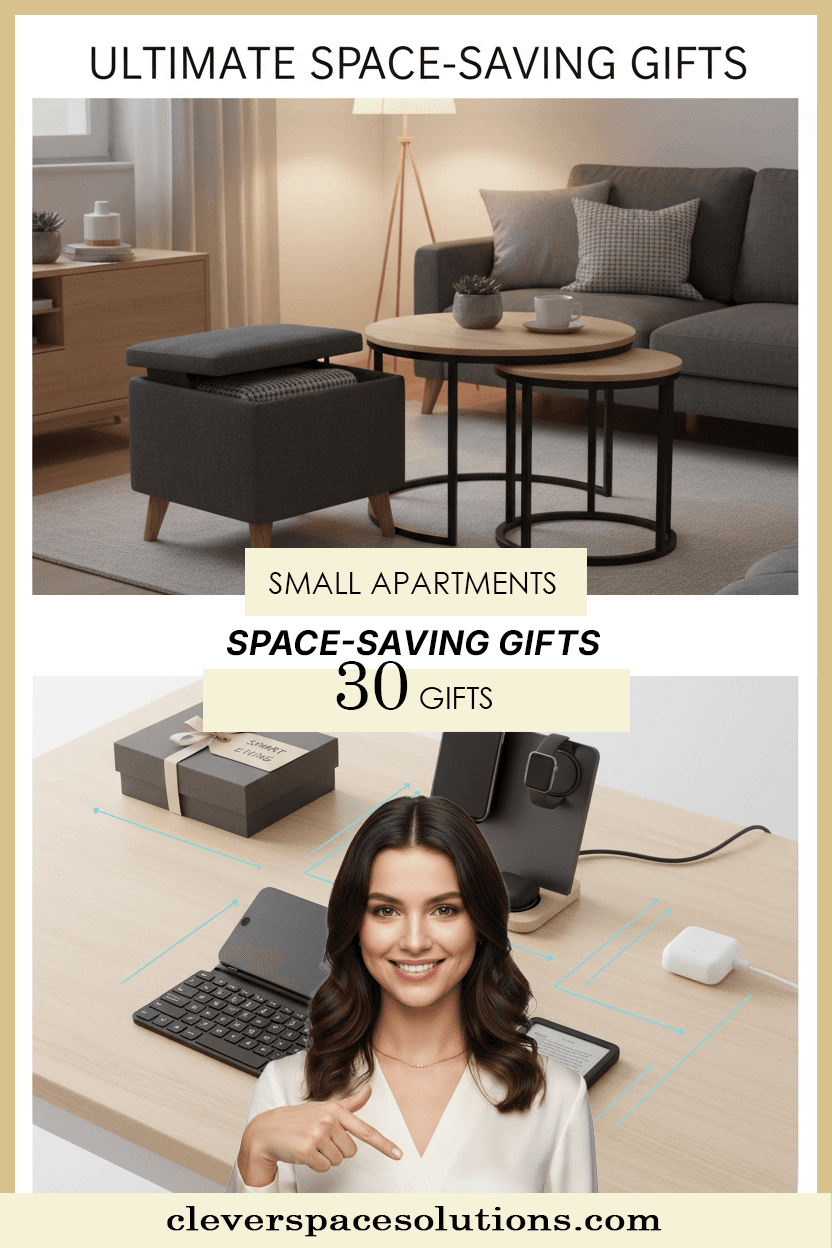
Best Space-Saving Gifts for Small Apartments?
Wondering what gifts to buy for someone in a small space? Our 2025 guide answers with 30 genius space-saving tech, storage, and furniture ideas.